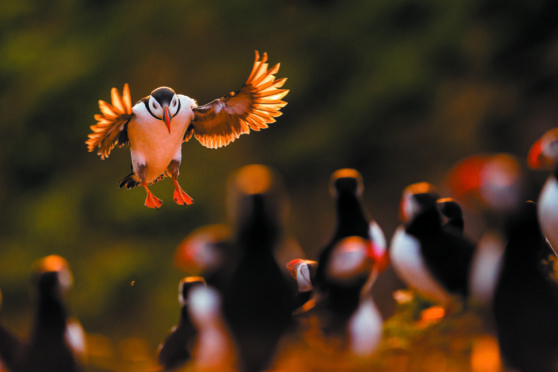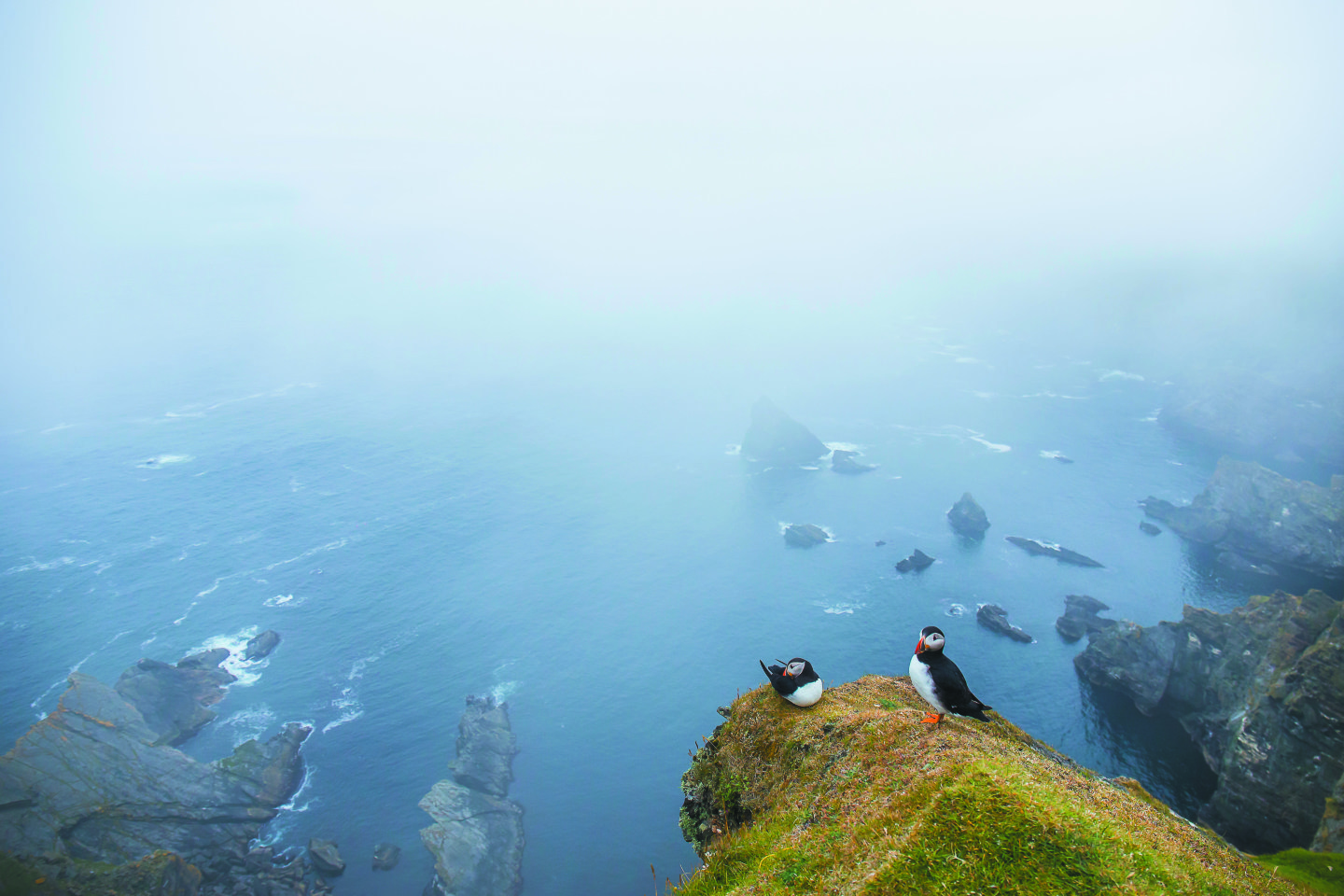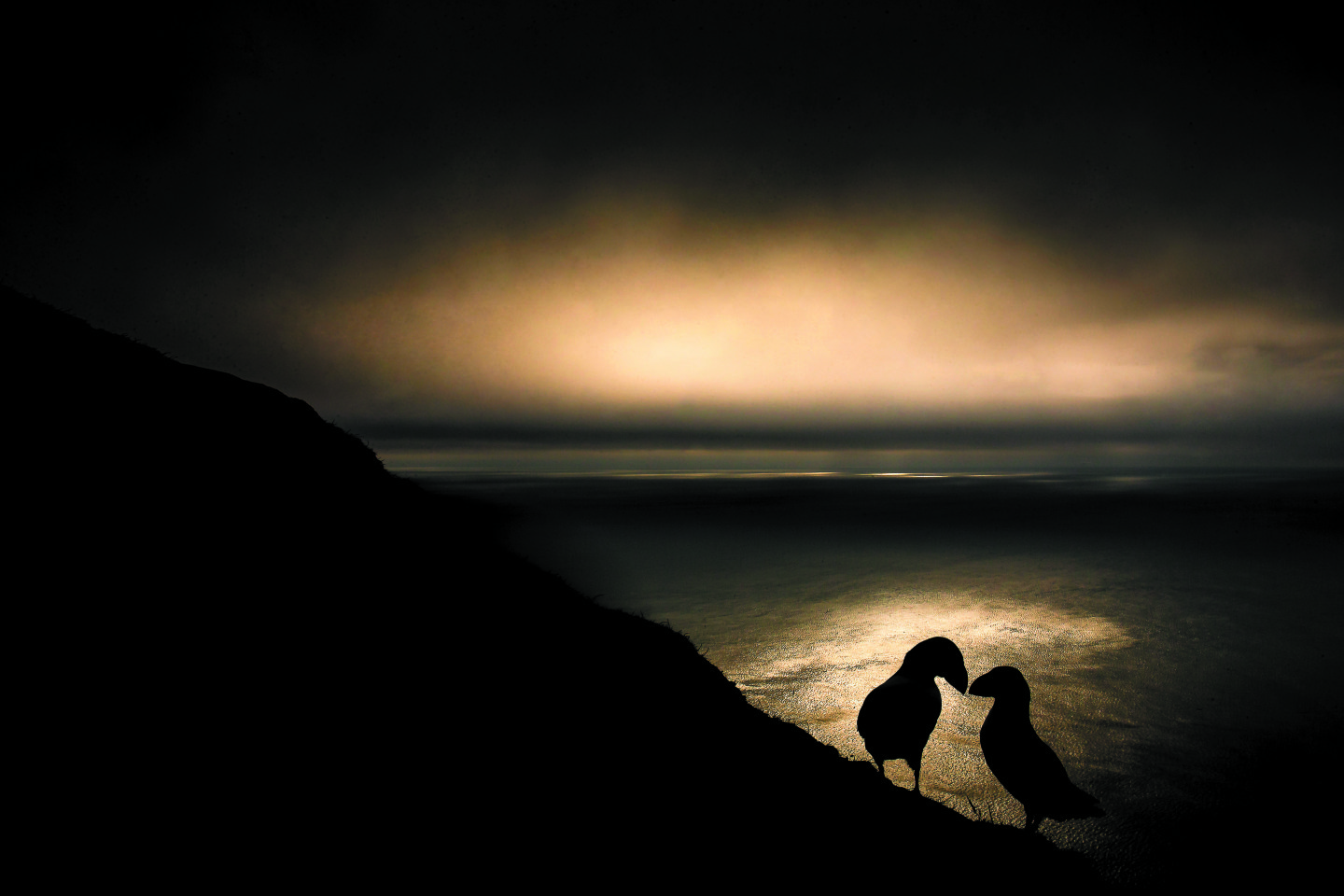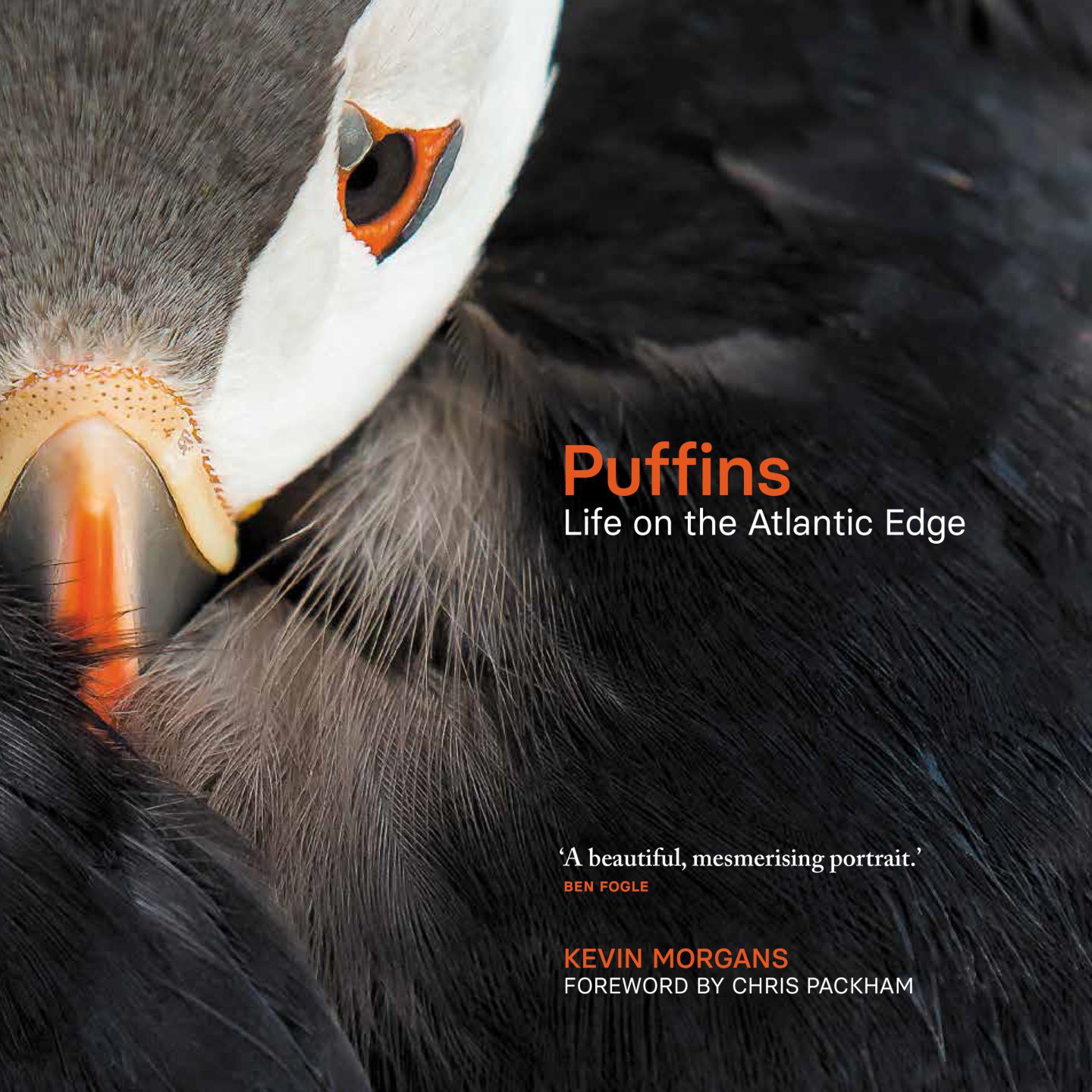There are no fast tracks to success in the world of wildlife photography. Nature isn’t a willing cast member with its lines learned and a director standing in the wings crying “Cut” at the end of a scene.
On the contrary, in this realm, genius is an infinite capacity for taking pains and Kevin Morgans appreciates that more than ever after being the catalyst for a stunning book which charts the dramatic life of one of the world’s most popular birds – the puffin.
It has been a labour of love which required him to travel thousands of miles and spend countless hours waiting for these coastal inhabitants to take centre stage in his lens.
Yet, all that time and effort has been vindicated in his finished work, which is not only a visual feast, but offers a reminder of the battles which these endangered birds fight as they strive to set up new colonies and confront the impact of climate change.
Growing up in the north of England, Kevin would find himself gripped by “a flash of white or a blaze of brown” as another bird flew off into the horizon and his interest was piqued by nature in the wild even before he had purchased his first camera.
As he said: “I often wonder what adventures these birds must have and what hardships they must face. It was moments like these that sparked my fascination with seabirds.
“Ever since, I have been drawn to the coastal regions of our islands: the ragged edges of Shetland, beautiful Pembrokeshire in Wales and, of course, my homeland the Wirral. These are where I live, work and find solitude and they mean everything to me for the childhood memories they evoke and the opportunities they provide.”
His early experiences inspired Kevin to follow the road he pursues every summer when he embarks on an annual pilgrimage to the Shetland archipelago.
It’s a truly breathtaking location, replete with an abundance of wild seascapes and rugged cliffs, and whose islands are a haven for countless breeds of birds.
I’m at home in these wild places
He said: “Of the many wonderful locations to photograph puffins, Fair Isle is my favourite. Britain’s most remote inhabited island is only five kilometres long by three wide, but it is a birdlife paradise. Its puffin population is not the most numerous but, in my opinion, it is one of the most beautiful.
“Sitting atop a cliff among the seabird colonies, despite all the frantic commotion, I experience a deep sense of calm and the world’s issues fade away. And, watching the birds glide effortlessly over the sea, I feel at home.”
While bringing his work to fruition, Kevin admitted that the hardest part of the project “by far, was the transition from active photographer to sedentary writer.
“Sitting at a computer screen for weeks on end was a stark contrast with only one saving grace. It became a sort of lifeline during those terrible periods of lockdown that we all endured. Even so, moving outdoors to indoors was a trial.”
But the exquisite results speak for themselves and renowned TV naturalist and Springwatch presenter, Chris Packham, who has provided a thought-provoking foreword, is not the only person who will find these images “exceptional”.
The scenery is spectacular and the vistas are off the scale in Kevin’s camera lens. But he was determined to create something more than just a feast for the eyes.
He said: “The decline of our seabirds should be of huge concern to us all. The conservation, not only of puffins, but all our seabirds is one of my life’s great passions.
Life is growing increasingly difficult
“The Atlantic puffin is listed as vulnerable on the IUCN [International Union for Conservation of Nature] red list, meaning its global population is on a downward trend.
“Several factors have contributed, including unsustainable fishing, marine pollution and invasive predators, but their main threat comes from the climate crisis as rising sea temperatures alter the distribution and numbers of their primary food source: sandeels.
“These issues have made it increasingly difficult for them to find food and raise the next generation. However, with over 10 million adult puffins globally, it is not too late to reverse the downward trend, but salvation can only come through better stewardship of our oceans and coastal environments.”
There is one photograph in particular which Kevin regards as being special and it revolves around a story which almost comes from the Twilight Zone.
He said: “The image entitled ‘A Chance Encounter’ stirs memories of camping at Hermaness National Nature Reserve on the island of Unst [in Shetland].
“My faith in the human race was restored through one simple act of kindness. It involves travelling the full length of the British Isles, a forgotten tent, a stranger and one moment of incredible trust and kindness…”
There is empathy in these pages and a sense of the small part humans play in the grand scheme of things. Yet Kevin Morgans’ work is certainly not much ado about puffin.
Puffins is published by Sandstone Press.







Conversation